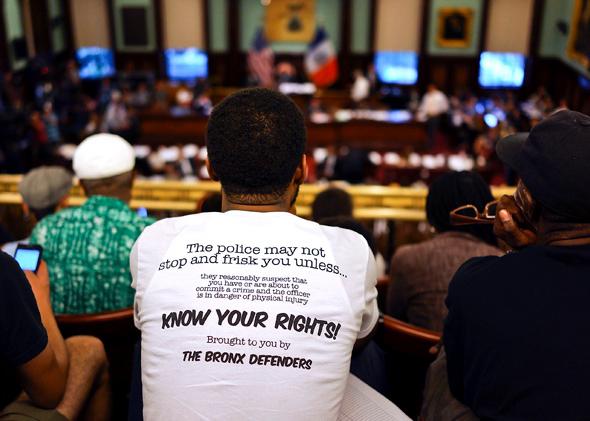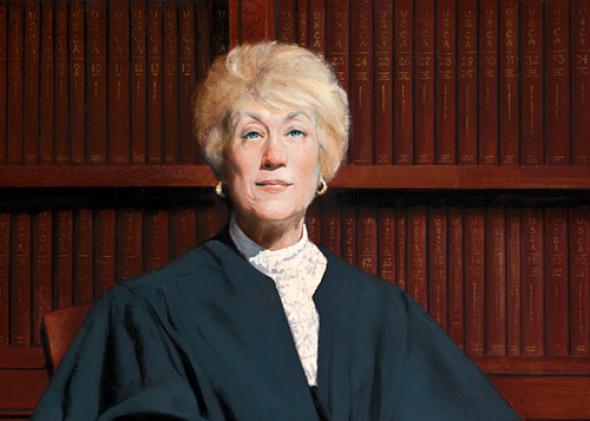In May, Senior U.S. District Court Judge Shira Scheindlin told the New York Law Journal that judges don’t take enough chances. “They are fearful or they want a promotion or whatever it is, they don’t exercise the independence they should have,” she said. “State court judges of course face re-election, which is a terrible thing, but federal judges, who are appointed for life, don’t appreciate how much independence they have—many of them are a little cautious, more cautious than they should be.”
Scheindlin was determined not to fall into that trap. In August, she ruled that the New York Police Department violated the Constitution with its stop-and-frisk program, finding that it relied on racial profiling. Scheindlin’s decision famously incensed Mayor Michael Bloomberg and forced a reckoning that has already led to changes in the way the city deploys stop and frisk. More change will follow after next Tuesday’s mayoral election: Bill de Blasio, who will almost certainly succeed Bloomberg, has made it clear that he’s leery of the disproportionate stops of African-Americans and Hispanics and wants to rein in this practice. But Scheindlin herself was smacked down Thursday by three judges of the U.S. Court of Appeals for the 2nd Circuit. They said she overreached in taking multiple stop-and-frisk cases and created an appearance of impropriety by talking to the media. The appellate judges have yanked the stop-and-frisk cases (there’s more than one) from Scheindlin and reassigned them to another judge, in an order designed both to personally embarrass her and to send a message to other bold judges, particularly those who dare talk to the press: Watch your step.
That’s a big shame, because it will have a sad effect on the public role that judges play. Scheindlin sounded a self-aggrandizing note in the interviews she gave last spring and summer. “What I did was gutsy,” she said in The New Yorker about a Sept. 11 case she handled. And: “I don’t think I’m the favorite of the U.S. Attorney’s office for the Southern District. Because I’m independent. I believe in the Constitution. I believe in the Bill of Rights. These issues come up, and I take them quite seriously. I’m not afraid to rule against the government.” For a judge to talk like that with a big civil rights case pending isn’t the most circumspect or prudent move. But what should matter far more is that Scheindlin didn’t break the rule against talking about pending cases, as she has pointed out. And so scolding her for talking to the press will just make other judges afraid to get anywhere close to the line. I know it’s in my interest as a journalist for judges to feel freer to talk. But really, the larger problem is that the public doesn’t understand enough about the work that judges do, not that Scheindlin got a little carried away in trying to shed some light on it.

Photo by Spencer Platt/Getty Images
The 2nd Circuit hasn’t said whether Scheindlin’s ruling against New York City was right or wrong. Instead, the three-judge panel said she “ran afoul” of the code of conduct for federal judges by making her impartiality seem as if it could be questioned and through her “improper application” of the rule by which judges agree to handle “related cases.” The 2nd Circuit dinged her for giving media interviews and for telling the plaintiffs in a previous civil rights suit against New York City that if they had proof of “inappropriate racial profiling” they could file a new lawsuit and “mark it as related,” which would route it to her chambers. Scheindlin added, referring to the filing fee, “I am sure I am going to get in trouble for saying it, for $65 you can bring that lawsuit.” Sure, that off-the-cuff remark looks impolitic now that the appeals court has shone a spotlight on it. But the reason for routing related cases to a single judge is to make the system more efficient and conserve resources. Why should Scheindlin have handed off a new case to a different judge?
There’s no question that Bloomberg and the NYPD hated having her preside over the stop-and-frisk suits. But that doesn’t mean she was biased. It means that she was giving them a hard time, for reasons that the appeals court may yet find were entirely justified. And tellingly, the city’s lawyers didn’t ask the 2nd Circuit to disqualify her. That means no one briefed or argued this question, and Scheindlin had no chance to defend or explain herself before the decision was made. The 2nd Circuit’s move to remove her was itself an overreach. “There is absolutely nothing in the record before the 2nd Circuit addressing these issues,” says Nancy Gertner, a former (bold) federal judge in Boston who now teaches at Harvard Law School. “If there is bias here, it is that of the 2nd Circuit that went out of its way to disqualify a judge—outside of the normal processes, looking beyond the record, and without giving her a chance to respond.”
And since the 2nd Circuit’s order also freezes the stop-and-frisk cases until further appellate rulings, there was just no reason to remove Scheindlin (other than the message sending and the personal rebuking, that is). “Given the order to stay, which left the district court with nothing to do, reaching out to decide disqualification now was premature and precipitous,” says Yale Law School professor Judith Resnik.
The upshot of this is that Scheindlin’s effort to dismantle the worst aspects of stop and frisk will have lasting and important impact. But so will the blow the 2nd Circuit has dealt to judges who refuse to be overcautious. And for that, we’re all the poorer.
